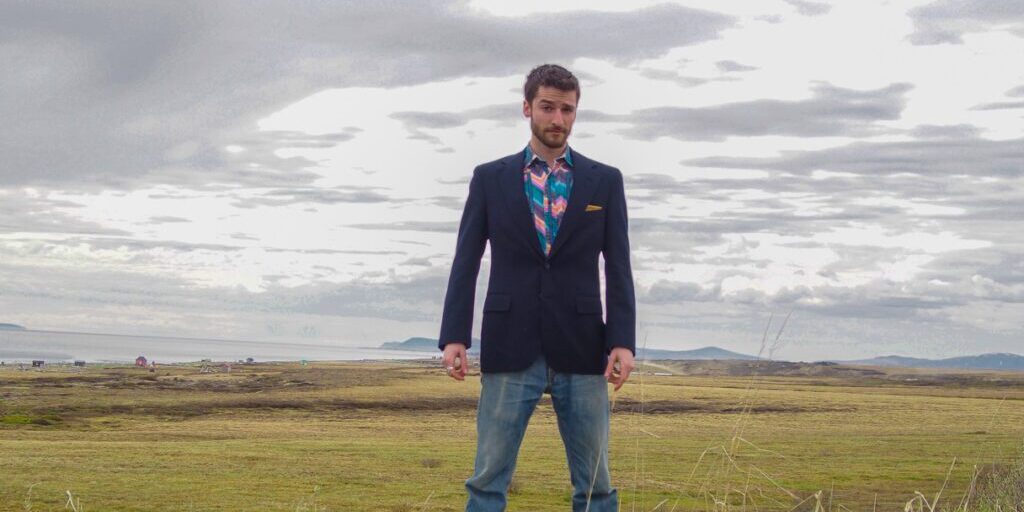All over Alaska it’s fish season. Including the newsroom. We’ve been doing salmon stories for weeks, but as the chum, sockeye, and pinks make their way up the Norton Sound, fish affairs are swimming beyond just the professional and political, on into the personal.
Saturday morning I woke up just after 5am to tag along on a fishing trip with three generous, patient dudes (two of them community DJ’s at KNOM). We drove 20 or 30 miles up the road, parked by a bridge, and then hiked down along a river, fishing poles poking skyward like antennae, gaits lumbering from the boots and chest waders. The modern industrial miracle of insulated, waterproof materials meant we could cross any part of the water shallower than our chests—which, given the differences in our sizes, meant different things. New to waders, it was a source of joy and wonder to me that the aquatic landscape was suddenly liberated from the persistent threat of cold and damp and wet consequences. We could walk anywhere we needed.
I caught the first fish: a beautiful, large Grayling. But my guides advised me to let it go, which I did. After that I got nothing, even as everyone else seemed to be pulling whitefish out of the river at consistent 10-minute intervals. My casting improved dramatically, as I got plenty of practice. Also, I had basically no idea what I was doing at the outset. It is easy to improve if you’re starting at zero. I was given much patient advice on what to look for in the water, how to use the current, which lures to fasten. It was as educative as it was humbling.
We stayed much longer than I anticipated, and had hiked much further in. I didn’t bring enough food, and rationed my trail mix to just avoid—not sate—weak-kneed hunger. Trudging up river on the way back to the truck I felt too worn out, cold, and blistered to speak. I’d slept briefly and poorly the night before, and the energy debt hit when we still had about a mile of water, mud, and tundra to go. The other three guys had heavier packs than I did, and one was dragging six fish strung on a cord over his shoulder, another 30 or so pounds. I didn’t understand how they weren’t crawling, which I’d have considered a viable alternative if by myself.
Anyway, it was great. I got home four hours later than I thought I would, too enfeebled and drained to make good on any of the day’s other plans. For a while I just leaned against the shower wall staring at my feet because it was the blankest and stillest thing I could manage without falling asleep. It took food and three cups of coffee to be able to get dressed for a birthday party that evening. But in the end I managed.
I could not have done this a year ago. My anxiety was too great, atrophying my dexterity and resolve towards paralysis. The physical part would have been ok; I was in good shape a year ago, body honed by uncommitted mornings jogging around Brooklyn and a fastidious yoga schedule. But other parts of yesterday’s fishing trip would have caused me distress for days in advance. Waking up extra early, packing enough food just in case, logistics, doing a new thing the right way, the availability of bathrooms—these are the kinds of small variables that, dripping sweat from claustrophobic terror on the New York subway last summer, I would have felt I just could not do. My routines were a brace, then, letting a damaged limb gain a little mobility and utility. But deviations would send me into indecisive, nervous spirals of dread, panic, nausea, and an enervating internal refrain: “Why is this so hard for me when it looks so easy for everyone else?” A cabinet of maladies I rarely felt able to close.
That is rarely the case anymore. The cabinet stays shut most days, and when it swings open I have more tricks for shutting it back up. Whether that’s because engaging with the natural environment has a restorative faculty, or because I’m more existentially secure in my work and community than last year, I am not sure.
What does feel sure: a trout stuffed in a plastic bag sits in our fridge as I type, and after asking around and watching a YouTube video I believe I can manage filleting it—a thing I’d have had a much harder time with one year ago. Not the filleting itself, but the managing.






